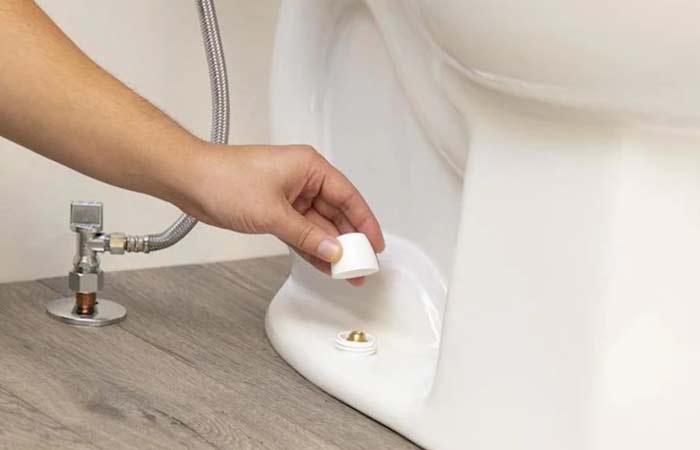Experiencing a bathroom leak around the toilet can be both frustrating and damaging. Not only does it pose a risk to the structural integrity of your bathroom floor, but it also leads to water waste and potential health hazards. Understanding the causes, solutions, and prevention methods for such leaks is crucial for both homeowners and industrial engineers. This article delves into the intricacies of bathroom leaks, providing valuable insights to safeguard your space.

Understanding the Causes of Bathroom Leaks Around Toilet
There are several reasons why a toilet might leak. Identifying the root cause is the first step in resolving the issue effectively.
Worn-Out Wax Ring
The wax ring is a crucial component in sealing the toilet to the floor. Over time, it can degrade, causing water to seep out. This is one of the most common reasons for leaks around the toilet base.
Loose or Damaged Bolts
The bolts securing the toilet to the floor can become loose or corroded. This instability can disrupt the seal, leading to leaks.
Cracks in the Toilet Base
Physical damage to the toilet itself, such as cracks in the porcelain, can cause leaks. These need to be addressed immediately to prevent further damage.
Solutions for Fixing Bathroom Leaks
Once you’ve identified the cause, it’s time to fix the leak. Here’s how you can tackle the problem:
Replacing the Wax Ring
Replacing a worn-out wax ring is a straightforward process. Turn off the water supply, remove the toilet, and replace the old wax ring with a new one. Ensure it’s properly sealed before re-installing the toilet.
Tightening or Replacing Bolts
If the bolts are loose, tighten them cautiously to avoid cracking the porcelain. If they’re corroded, replace them with new ones to ensure a snug fit.
Repairing or Replacing the Toilet
If the toilet base is cracked, you may need to repair or replace the entire toilet. Consider consulting a professional if the damage is extensive.
Preventing Future Bathroom Leaks
Prevention is always better than cure. Here are some tips to prevent leaks around your toilet:
Regular Inspections
Conduct regular inspections of your bathroom plumbing to catch potential issues early. Look for signs of wear and tear, and address them promptly.
Proper Installation
Ensure your toilet is installed correctly from the outset. This reduces the risk of leaks caused by improper sealing or alignment.
Use Quality Materials
Invest in high-quality materials for your bathroom fixtures. Durable components are less likely to degrade quickly, reducing the likelihood of leaks.
Dealing with Water Damage
If a leak has already caused water damage, it’s important to address it promptly. Water damage can lead to mold growth and structural issues.
Mold Remediation
Mold can pose health risks and should be removed by professionals. You can learn more about mold from bathroom leak to understand how to deal with this issue effectively.
Repairing Water-Damaged Areas
Repair any water-damaged areas of your bathroom promptly. This may involve replacing flooring, drywall, or other affected materials.
Understanding the Environmental Impact
Bathroom leaks not only waste water but also contribute to environmental concerns. Consider the impact of wasted water and the importance of conservation.
Water Conservation Tips
Adopt water-saving practices in your home. This includes fixing leaks promptly and using water-efficient fixtures.
Participate in Initiatives
Engage in initiatives like the Fix a Leak Week to stay informed and proactive in preventing leaks.
The Role of Technology in Leak Prevention
Technology can play a significant role in preventing and detecting leaks. Here’s how:
Smart Leak Detectors
Install smart leak detectors that alert you to any unusual moisture levels. These devices are an excellent investment for modern homes.
Automated Water Shut-Off Systems
Consider automated systems that shut off the water supply in case of a detected leak. This can prevent extensive water damage.
Engaging Industrial Engineers
For industrial engineers, understanding bathroom leaks is critical. Their expertise can lead to innovative solutions for leak prevention and management.
Collaborative Solutions
Engineers can work with plumbers and manufacturers to develop more efficient and durable bathroom fixtures.
Research and Development
Continued research into materials and technologies can lead to breakthroughs in leak prevention.

FAQs About Bathroom Leaks Around Toilets
How can I tell if my toilet is leaking?
Look for water pooling around the base of the toilet, a musty odor, or an increase in your water bill. These can all be indicators of a leak.
Can a leaking toilet cause other problems?
Yes, a leaking toilet can lead to water damage, mold growth, and increased water bills. It’s important to address leaks promptly.
Should I fix a leaking toilet myself or hire a professional?
Simple issues like loose bolts can be fixed by homeowners, but more complex problems should be handled by a professional plumber.
Understanding and addressing a bathroom leak around the toilet is crucial for maintaining a healthy, efficient home. By identifying causes, applying solutions, and engaging in preventative measures, you can safeguard your bathroom and contribute to water conservation efforts. For more tips on handling bathroom leaks, visit how to fix a bathroom leak and hidden water leak signs.
This article contains affiliate links. We may earn a commission at no extra cost to you.



